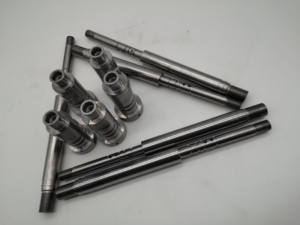Product Categories
- Products (9)
CPK is a statistical process control measure that is used to ensure that the manufacturing process is in control and capable of producing products that meet customer specifications. CPK is a key tool for quality control and can be used to identify problems early in the manufacturing process, saving time and resources.

The CPK process involves measuring the variation in the manufacturing process and comparing it to the tolerance limits specified by the customer. The CPK value is calculated using a formula that takes into account the mean, standard deviation, and the upper and lower specification limits.
A CPK value of 1.0 or higher indicates that the manufacturing process is capable of producing parts that meet the customer’s specification limits with minimal variation. A CPK value of less than 1.0 indicates that the manufacturing process is not capable of consistently producing parts within the customer’s specification limits and needs to be improved.
CPK is an essential tool in quality control because it allows manufacturers to identify and address problems early in the manufacturing process. For example, if the CPK value is less than 1.0, it may indicate that the manufacturing process needs to be improved or that there is a problem with the raw materials being used. By addressing these issues early, manufacturers can avoid costly rework and scrap.
There are several steps involved in implementing a CPK process. The first step is to identify the critical-to-quality characteristics of the product. This involves determining which characteristics are most important to the customer and specifying the tolerance limits for each characteristic.
The second step is to measure the variation in the manufacturing process. This is done by collecting data on the critical-to-quality characteristics and calculating the mean and standard deviation for each characteristic.
The third step is to calculate the CPK value for each critical-to-quality characteristic. This is done using the formula mentioned earlier.
The final step is to analyze the CPK values and determine if the manufacturing process is capable of producing products that meet the customer’s specification limits. If the CPK value is less than 1.0, the manufacturing process needs to be improved.
In conclusion, CPK is an essential tool in quality control that allows manufacturers to ensure that the manufacturing process is in control and capable of producing products that meet customer specifications. By implementing a CPK process, manufacturers can identify problems early and avoid costly rework and scrap.